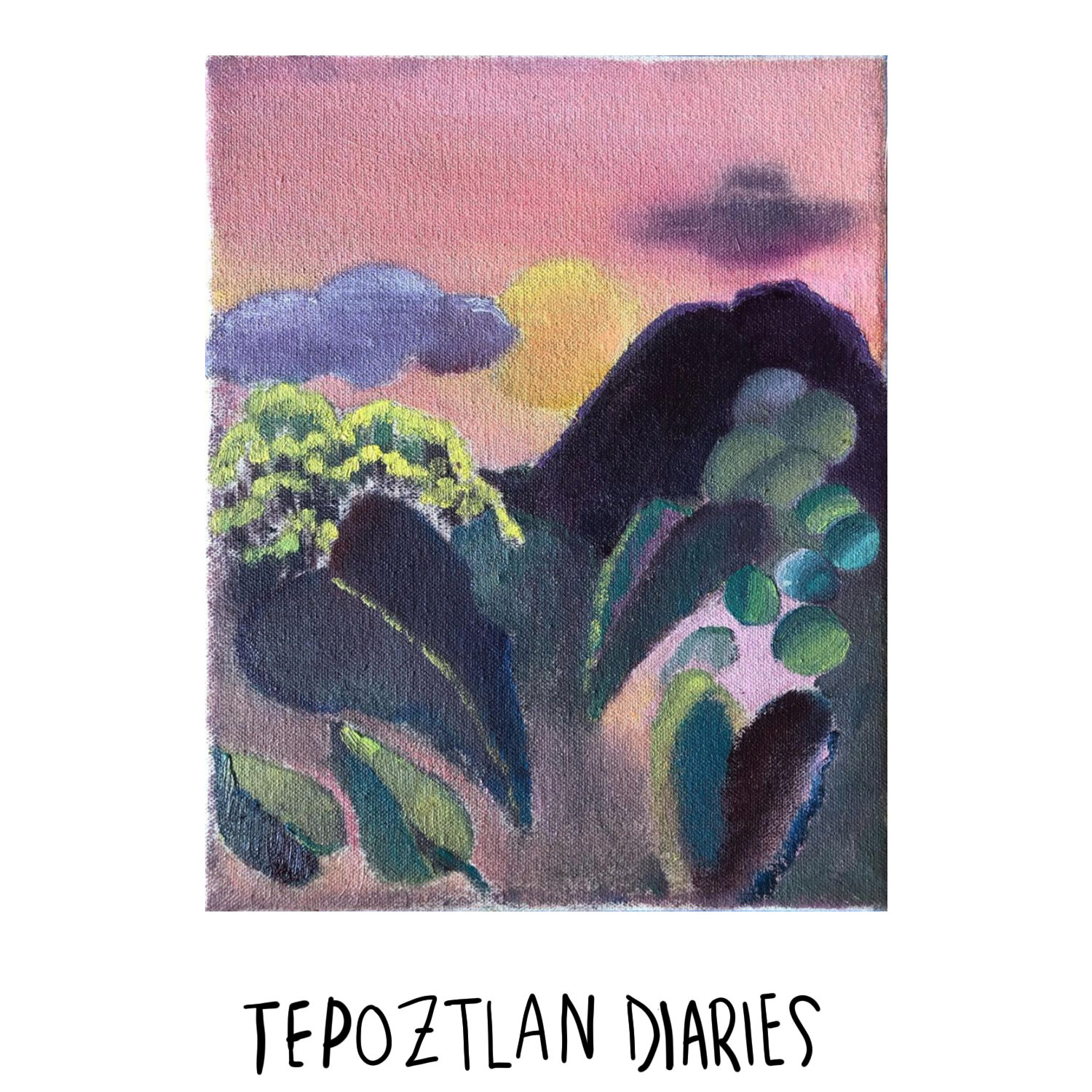
Tepoztlan Diaries
Solo exhibition at Casa Lu in Mexico City, Mexico
June 7 – 14, 2020
Diarios de Tepoztlán is an exhibition of small oil paintings that were made during a four-month artist residency at Casa Lü. The first three months of the residency were spent in the remote, tourist town of Tepoztlán about 90 miles south of Mexico City. The series is an intimate, subjective response to my time there. Analogous to diary entries, the paintings were made to capture a mood, the color of the light, or a one-off response to the place.
I began quarantining a month into my stay, so the majority of my time was spent at the house in the outdoor studio on the porch. I would spend hours looking at the majestic cathedrals of Tepoztlán’s mountains and being enveloped by the mechanical hum of the cicadas. I developed a deep familiarity with the shifting quality of the light and the way the sun slowly made its way across the sky and directly into my studio, marking the end of my studio time on any given day.
As a general theme in my work, both this series and other projects I am working on, I am interested in the symbols that have been used historically to personify male and female energies. For example, the moon has traditionally represented the feminine and the sun has represented the masculine- as far back as in religious painting and in more populist artwork like the imagery for tarot cards. In these paintings, I pull from these symbologies to develop a personal narrative.
Finally, many pieces in this body of work were made with a nod to the way that Tepoztlán is seen by outsiders. Since the city is primarily known around Mexico, and the world, as a tourist destination where Mexico City residents flock every weekend to drink in the centro and hike up to the ancient temple, Tepozteco. It is also a destination for “ex-pats,” a problematic term for mostly-white immigrants who benefit from the low cost of living while making money in the currency of their 1st-world home countries. I spoke to many foreigners who used the phrase “magical” to describe Tepoztlán while their eyes glazed over with a faraway look. This might be a subconscious reference to or a misunderstanding of the city’s status as a pueblo mágico which was created as a way to drive tourism to cities throughout the country.
While I agree that Tepoztlán has a special energy to it, and is a beautiful place to live and visit, I am interested in the way that its ‘magic’ is packaged and commodified for outsiders. As a painter and someone who is interested in alternative spiritual and religious practices, I am curious how the tradition of landscape painting, like the kind sold at tourist shops in many tourist destinations, and the superficial references to mysticism that are common within the Tepoztlán ex-pat community, might play into that exoticization.
